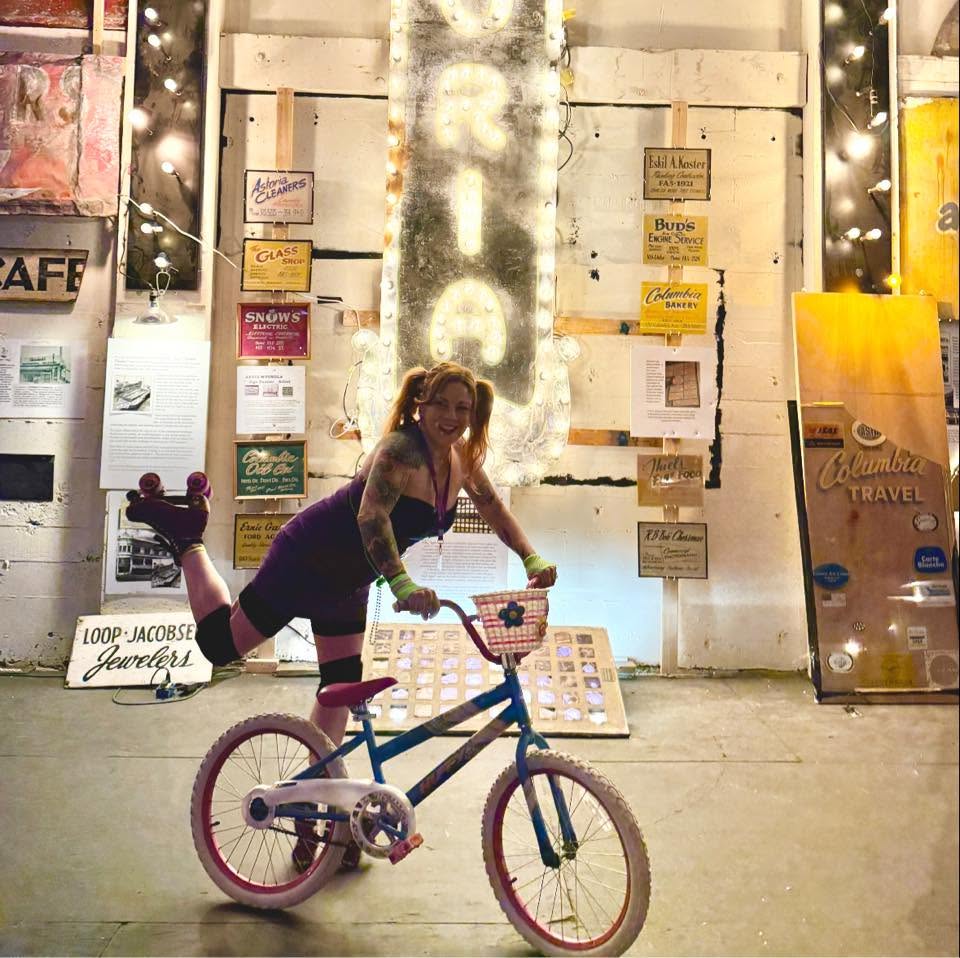Neo-traditional homes blend classic and new
Published 4:00 pm Thursday, December 31, 2009
Trending
|
This Craftsman-inspired new home in Astoria was built by artisan woodworker Tim Kennedy. Photo: courtesy Blind Moses Woodworking |
Some North Coast communities, like Astoria, are renowned for their period architecture; primarily an eclectic mix of Victorian and Craftsman style homes, many of which have been lovingly restored.
In fact, the region is home to a devoted community of architectural aficionados who are enthusiastic about historic preservation.
Trending
But some homeowners who prefer the period look get more of a thrill from the comfort of modern amenities like double pane windows, central heating and air conditioning, and
|
We deliver: Sears and the catalog house
In the realm of neo-traditional homes, one unlikely company has a unique niche.
Sears, formerly Sears, Roebuck and Co., at one time sold do-it-yourself houses.
Between 1908 and 1940 the company marketed kit homes – meaning buyers could order a home from the then-ubiquitous Sears catalog.
Customers could buy a house and have the plans and building materials shipped in pieces ready for assembly.
The Sears house inventory featured 22 different home styles, mostly Victorian and Craftsman models, with appealing names like “Winona” and “Bandon.” House kits ranged from $650 to a little over $4,000.
The two-bedroom Craftsman Bandon design sold for $4,317 and featured a wide front porch, living room, sun, room, dining room, kitchen and bath. The price included all building materials, kitchen cabinets, a medicine cabinet for the bathroom, and a fireplace mantel.
By the time Sears ended its “Modern Homes” catalog program in 1940, the company had sold more than 100,000 units nationwide, not including cabins, outhouses, garages and farm buildings.
During the same period another big catalog store name, Montgomery Ward, also sold kit homes, as did a few other U.S. companies.
[Source: Sears Archives]
|
larger rooms that fit contemporary needs.
For those buyers, neo-traditional architecture could be just the thing, a philosophy that can be a harmonious blend of old and new.
Neo-traditional buildings can range from a home that resembles an ornate Victorian on the outside, to simpler, more modern designs with decorative touches to create a period feel.
A few characteristic details likely to be found in neo-traditional homes include gables, towers, weather vanes, mock shutters, ornamental woodwork, and stained glass windows.
Artisan-built new homes have a traditional look and feel
Artisan Tim Kennedy owns Blind Moses Woodworking in Astoria. He’s also on the board of the fledgling Columbia Pacific Historic Preservation Guild.
Kennedy has a passion for artisan construction that has carried him through a 30-year career. He’s done a great deal of restoration and renovation work on older houses. He also builds new homes that borrow from period designs.
He recently finished building a house located at 10th Street and Grand Avenue in Astoria. The home follows the Craftsman philosophy and might be termed a “neo-Craftsman.”
Craftsman, or “bungalow-style” architecture was very popular in the U.S. for new homes up until about the 1930s. Originated by famed designer Gustav Stickley, it began as a reaction to the opulence of the Victorian era.
Craftsman homes featured clean lines and simple designs. Such houses usually had lower ceilings than Victorians (making them cheaper to heat), built-in cabinetry, and breakfast nooks that allowed families to eat in the kitchen, a layout not generally found in Victorians.
Kennedy uses all solid woods in his houses, which makes them similar to vintage homes in that regard. But there are some compelling reasons why homeowners might choose a newer home over a vintage one.
“A lot of people love to get into a [new] house like that because it has all the amenities including the lack of maintenance,” he said. “And there’s really significant savings having to do with their utility bill.”
Kennedy said with new construction, builders have the option to incorporate energy-efficient materials.
“The majority of old houses have no insulation and single pane windows,” he said. “They spend probably $300 to $400 a month on heating bills.”
Kennedy estimated that the three-story Grand Avenue house would have a heating bill of about $100 a month, because it’s new and well insulated. However, efficiency and fine workmanship are not inexpensive.
“I wish I could say they are more affordable,” he said of neo-traditional homes. The four-bedroom, three-bath house lists for $625,000.
Kennedy said it’s possible to buy an older home and renovate it to meet modern standards.
“But it’s much grittier and there are many more compromises. In old houses there are always a lot of foundation issues for starters, especially in Astoria,” he said. “Usually with old houses you start by truing up the house and building a new foundation. With a new home you’re off to a fresh start.”
Kennedy said Craftsman designs tend to have larger rooms than Victorian homes, which is one reason why he tends toward that look in his new builds.
“Rooms were very distinct and compartmentalized, very separated from each other,” he said of the Victorian approach. “I tend to open them up a lot in the interior and combine rooms.”
A homeowner’s view
Seaside resident John Dunzer owns an elegant neo-Victorian home in the Cove area of town. The house abounds with nostalgic Victorian charm, but was built in 1998.
Dunzer said he and wife fell for the house when they first set eyes on it, before they even set foot inside. Once they did, they were sure they wanted it.
He said the Victorian design was a big draw, and visitors have described their residence as being “just like grandma’s house.”
Dunzer said the Victorian look is a good fit for the neighborhood, which was originally developed with the idea that all the homes there would be neo-Victorian designs. The area is now a mix of Victorian and other architectural styles.
|
This Seaside neo-Victorian belongs to the Dunzers. Photo: courtesy John Dunzer |
The Dunzers have carefully added many amenities to their home that have only increased its Victorian allure: guest rooms above the garage, a breezeway to connect the garage and the house, walk- in closets, and a rooftop deck that offers great views of the ocean. The house even has an elevator, which they also added. The third floor attic is now finished, a renovation project that added 1,000 sq. ft. to the living area of the house.
“It looks more appealing now than when we bought it,” he said.
Dunzer said their neo-Victorian has suited them better than a similar vintage home would have.
“I guess we don’t like all the problems that are associated with old houses, but we do like the atmosphere of that particular architecture,” he said. “It’s about the house working with the lot and the neighborhood, and working with the area.”









